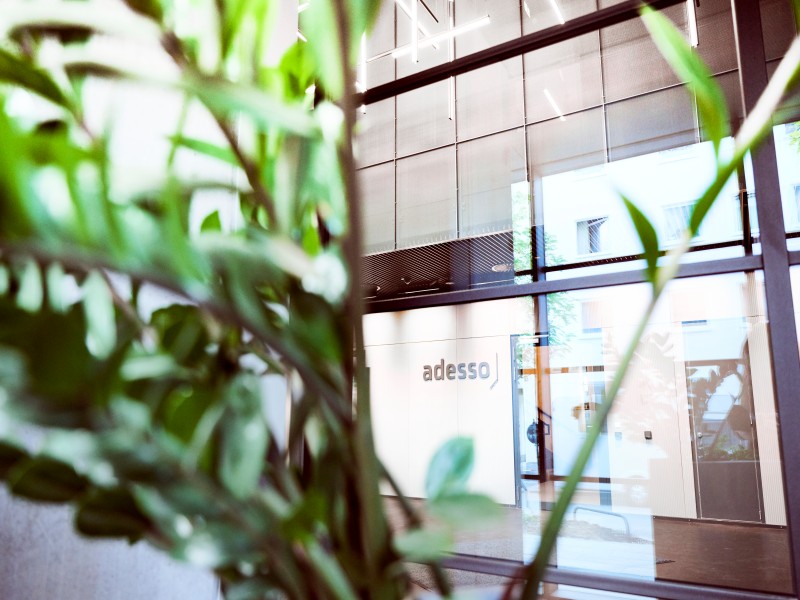26. January 2023 By Ellen Szczepaniak, Simon Bächle and Zoe Holdt
Solar power: from the balcony right into the plug
Imagine you are sunbathing on your balcony in summer, enjoying a cold drink from the fridge and, at the same time, generating electricity. And all you need to do it is a balcony or patio and a balcony power plant kit.
But to what extent does a balcony power plant differ from a photovoltaic system (PV system) on the roof? A balcony power plant and a PV system are both types of solar plants, which use solar energy to generate electricity. The main difference, however, is in size and performance. A balcony power plant is usually smaller with a maximum output of 600 watts (inverter output) and is therefore better suited for personal consumption. PV systems, on the other hand, are often installed on the roofs of commercial or industrial facilities or in open spaces. Due to their size and the accompanying higher output, with PV systems, the generated electricity is often not only used for personal consumption but is also fed into the electricity grid.
Personal electricity from your balcony
Producing solar power yourself is quite simple. The solution: a balcony power plant. A balcony power plant is a type of mini solar power plant that can be installed on a balcony or patio. It consists of a series of solar modules (comprised of photovoltaic cells) that work in conjunction with an inverter and other components to generate electrical power from sunlight. The direct current it generates is converted into alternating current by the inverter. The solar module is connected to your home’s mains via a plug connected to the power socket. This allows the self-produced alternating current to directly supply your refrigerator, television or other devices that use electricity with power. In this case, less electricity is drawn from your electricity supplier, which means the numbers on the electricity meter go up more slowly. But no need to worry. If there is a cloud or dark days when the balcony power plant produces little or no electricity, your electricity supplier will supply you with electricity as usual. But even in situations like these, a balcony power plant can produce electricity with the help of a battery. This is because on sunny days, the balcony power plant can be used in tandem with a battery to store electricity for later. A regulator ensures that the balcony power plant’s output stays in the optimal range while at the same time protecting against overloading and overheating.
Am I as a tenant allowed to just install a balcony power plant? What do I have to keep in mind?
As a tenant, there are several important factors to keep in mind when installing a balcony power plant:
- Permission from your landlord: You should obtain permission from your landlord before you start installing anything. This is particularly important, as installing balcony power plants may be prohibited in some cases or require special permits. To be on the safe side, talk to your landlord.
- Weight and your balcony’s power handling capacity: Balcony power plants can have a specific weight and power rating, which means it must be ensured that the balcony can withstand the weight and the electrical load. Your landlord can help you with this, too.
- Power requirements: Think about how much electricity you want to generate and choose your balcony power plant accordingly. The location of the plant and its degree of incline are also relevant for this. Installing the system vertically on a south-west to south-east facing balcony railing is recommended. Installing it vertically allows you to optimise the amount of usable energy in the winter months and at the same time reduces the amount of unusable power peaks in the summer months. The optimal tilt angle in Germany is 35 degrees. However, it is important to note that in order to achieve maximum performance, the tilt angle should be varied depending on the season and the location of the balcony. Unsuitable locations include the recesses of balconies that get little to hardly any sunlight, on a wall with higher stories hanging over it and places shaded by trees or neighbouring buildings.
- Costs: Be aware of the costs involved with purchase and maintenance. Also plan for potential repair costs. The average costs for a balcony power plant range between €1,500 and €3,000. These costs typically include the solar modules, inverter, regulator and installation. You do not necessarily have to plan in the installation costs because a balcony power plant is so modular that you can install it yourself. You do not need any special expertise to do it. The costs for just the solar modules, inverter, brackets and power cables start at about €700. It is advisable to have several providers give you quotes in order to get a better comparison.
- Legal requirements: There may be certain local and national laws and regulations that have to be followed in order to install a balcony power plant. In any case, you have to register your balcony power plant with your grid operator and, in Germany, the German Federal Network Agency (Bundesnetzagentur). Most electricity suppliers already have standard forms for this on their websites. Alternatively, you can get information from the German Solar Energy Society (Deutsche Gesellschaft für Sonnenenergie). If your system is larger than 600 watts, you will have to call in an electrician. In general, your system should comply with the standards of the German Registered Association of the Electrical, Electronic and Information Technology (Verband der Elektrotechnik Elektronik und Informationstechnik e.V., VDE) in accordance with VDE-AR-N 4105:2018-11.
- Subsidies: Balcony power plants are subsidised in some cities. In Freiburg, Germany, for example, a plant is subsidised in the amount of up to €200 through the city’s ‘Renewable Electricity Generation’ programme. In Erlangen, Germany, the subsidy even goes up to €300. The subsidies, however, vary from city to city and from state to state.
What are the advantages and disadvantages of balcony power plants?
The advantages of a balcony power plant
- Saves space: Balcony power plants can be installed in a limited area and therefore require less space than large solar plants.
- Cost-efficient: Balcony power plants are typically smaller and simpler than large solar plants, which makes them more cost-efficient.
- Independence from the electricity supply: By generating your own electricity, you can become less dependent on the public electricity supply.
- Environmentally friendly: Using solar energy to generate electricity is an environmentally friendly alternative to using fossil fuels. In addition, the balcony power plant can be easily dismantled and transported when you move out. This gives you the flexibility to generate your own electricity for personal consumption in your new flat or house, meaning you do not have to buy a new system.
The disadvantages of a balcony power plant:
- Limited capacity: Balcony power plants are typically smaller and therefore have less capacity than large solar plants.
- Dependence on weather conditions: Generating electricity with a balcony power plant is dependent on weather conditions, especially the amount of available sunlight.
- High initial investment: Although balcony power plants can be cost-effective in the long term, the initial investment can be high compared to other energy sources.
- Restrictions by property owners: In some cases, there may be restrictions imposed by property owners or landlords that prohibit or restrict the installation of balcony power plants.
Balcony power plants – the future of decentralised power supply from a single source?
There are currently already about 190,000 plants with a total capacity of 66 megawatts (MW) and already about 190 balcony power plant suppliers. priwatt, PluginEnergy and Alpha Solar are among the best-known providers. Check with several suppliers and compare their offers before you get a balcony power plant.
In general, it can be said that a balcony power plant contributes to the energy transition. Since solar energy is what is used as the energy source, it reduces the demand for electricity from lignite, gas or nuclear power. Its simple, modular design allows you to flexibly set up and dismantle your system, and you do not have to buy a new one when you need to move out. It also increases your energy efficiency. Using self-generated electricity reduces the cost of purchasing electricity. On top of that, you are less dependent on your electricity supplier and you actively contribute to reducing carbon emissions by using renewable energies to produce electricity.
You will find more exciting topics from the adesso world in our latest blog posts.



